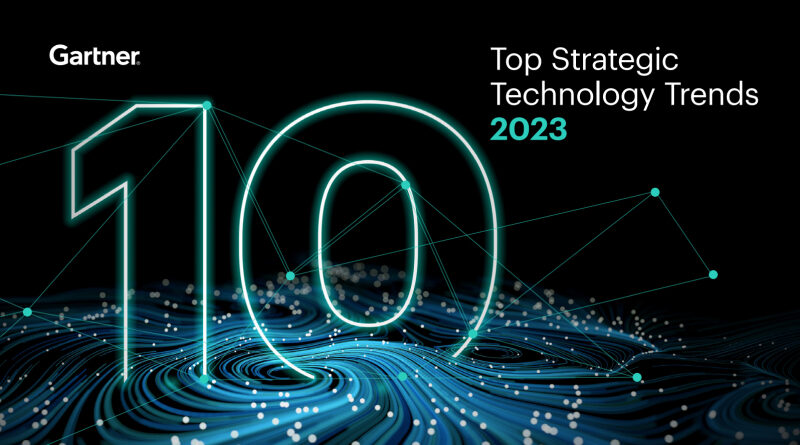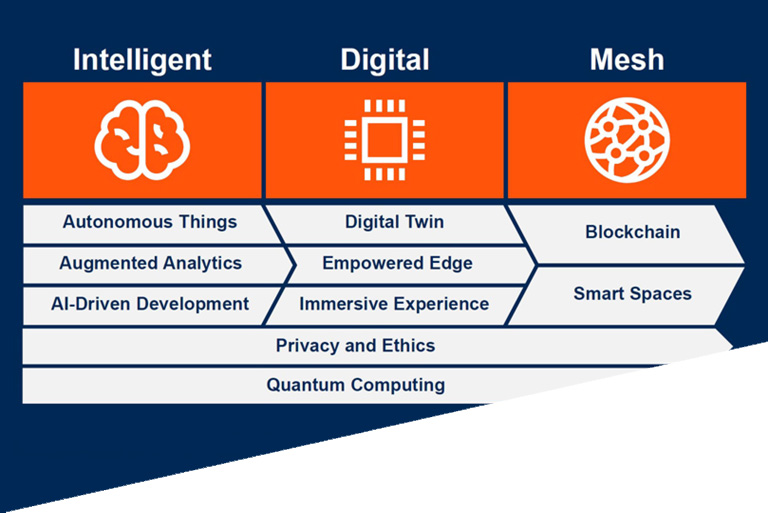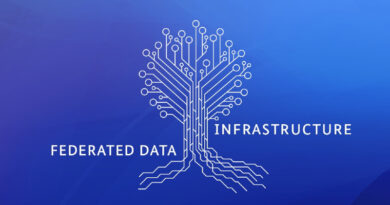Analyzing Gartner’s technology trends for this 2023
As every year, the Gartner Group publishes its list of the main strategic technological trends, and, as every year, we come here to analyze them to see what we are going to find in 2023.
As always, you can download the official Gartnet document after registering from this link.
But how does Gartner choose which will be the technological trends of the year? Well, they focus on three points:
- That the technology has a significant impact.
- That it implies a response from the C-suite executives in charge of either the digital and/or IT strategy.
- That it implies a response (either a decision to be taken or the action itself) in the next 0 to 36 months.
Starting from this, for this year, Gartner looks at technologies that drive business results, so it focuses on:
- Optimizing: IT systems, to achieve greater reliability, better data-driven decision making, and maintain the integrity of the value of AI systems put into production.
- Scaling: accelerating vertical offerings, increasing the pace of product delivery, and enabling connectivity everywhere.
- Initiation: enabling business model change, reinventing employee and customer engagement, and accelerating strategies to tap into new virtual marketplaces.
Thus, the trends that they consider key are:
- For optimization:
- Digital immune system.
- Applied observability.
- AI TRiSM.
- For scaling:
- Industry Cloud Platforms.
- Platform engineering.
- Wireless-Value Realization.
- For initiation:
- Superapps.
- Adaptive AI.
- The metaverse.
Let’s see what each of them consists of.
Optimization
Digital Immune System (DIS)
It is estimated that, by 2025, organizations that invest in building «digital immunity», will increase customer satisfaction by decreasing downtime by 80%.
A digital immune system combines practices and technologies from observability, artificial intelligence (AI)-augmented testing, chaos engineering, autoremediation, site reliability engineering and software supply chain security to increase the resilience of products, services and systems.

A DIS can be used as a frame of reference for investing in a set of practices to improve the quality and resilience of business-critical systems. The creation and evolution of a DIS leads to a more resilient business outcome and creates business value for both business and IT stakeholders. As such, it enables you to play an essential role in connecting software development to business outcomes and supporting customer experience strategies through modern technologies and practices.
Applied Observability
It is estimated that, by 2026, 70% of organizations that successfully applied observability will achieve shorter latency for decision making, enabling competitive advantage for target business or IT processes.
Applied observability is the applied use of observable data in a highly orchestrated and integrated approach across business functions, applications and infrastructure and operations (I&O) teams to enable the shortest latency from action to reaction and proactive planning of business decisions.

The observable data is cataloged, engineered and layered with semantic understanding for business context, which results in both active and passive metadata. The architected use of this metadata drives better, faster and more consistent and effective business and IT decisions.
AI TRiSM
This acronym stands for AI Trust, Risk and Security Management, and by 2026, organizations that operationalize this management type, will see their AI models achieve a 50% result improvement in terms of adoption, business goals and user acceptance.
Artificial Intelligence requires new forms of trust, risk and security management, that conventional controls do not provide. New AI TRiSM capabilities ensure model reliability, trustworthiness, security and privacy.
Las nuevas capacidades de AI TRiSM garantizan la confiabilidad, la confianza, la seguridad y la privacidad del modelo

This type of management accepts Artificial Intellignece-model governance, trustworthiness, fairness, reliability, robustness, efficacy and privacy. It includes solutions, techniques and processes for model interpretability and explainability, Artificial Intelligence privacy, model operations and adversarial attack resistance.
Scalibility
Industry Cloud Platforms
Per Gartner bby 2027, more than 50% of enterprises will use industry cloud platforms to accelerate their business initiatives.
These industry clouds will create value for organizations by incorporating cloud services that were traditionally purchased separately, into industry-relevant solutions that will be pre-integrated but customizable (composable). As such, they will be able to increase organizational agility, to speed innovation and to accelerate time to value.

The industry cloud platforms will combine software, platform and infrastructure as a service (IaaS) with customized, industry-specific functionality that can more easily adapt to the relentless stream of disruptions in their industry. Enterprises will be able to use the packaged business capabilities of industry cloud platforms, as basic building blocks to make up unique and differentiating digital initiatives. That will provide agility and innovation, and will reduce time to market, while avoiding lock-in at the same time.
Platform Engineering
By 2026, it is believed that 80% of software engineering organizations will establish platform teams as internal providers of reusable services, components and tools for application delivery.
The business value is in that it will help developers, data scientists and end users, and reduce friction for the work they do. Forward-thinking companies have begun to build operating platforms that sit between the user and the backing services on which they rely.

Platforms provide a curated set of tools, capabilities and processes selected by subject matter experts, and packaged for easy consumption by end users. The goal is a frictionless self-service experience, without hindrance, and that offers the right capabilities to enable users to do valuable work with as little overhead as possible, increasing end users’ productivity and reducing their cognitive burden. The platform should include everything the user team needs, presented in whatever manner best fits best with their preferred workflow.
Wireless-Value Realization
By 2025, it is thought that 50% of enterprise wireless endpoints, will use networking services that deliver additional capabilities beyond communication.
The integration of multiple wireless technologies, will provide a more cost-efficient, reliable and scalable technical foundation that reduces capital expenditure.

Wireless-value realization covers every field from traditional end-user computing, through support for edge devices, to digital tagging solutions. All of this will need connectivity to operate and require a spectrum of wireless solutions to cater to all environments. Networks will go well beyond pure connectivity to become a source of direct business value. Wirelessness is moving from a communications technology to become a broader digital innovation platform.
Initiation
Superapps
It is estimated that, by 2027, more than 50% of the global population will be daily active users of multiple superapps.
But, what can be considered superapp? A superapp is an app that provides end users (e.g., customers, partners or employees) with a set of core features, along with access to independently created miniapps. The superapp is built as a platform to deliver consistent and personalized app experiences.

A superapp is more than a composite application or portal that aggregates services, features and functions into a single user interface. A superapp represents the ultimate manifestation of a composable application and architecture.
Adaptive AI
By 2026, enterprises that have adopted AI engineering practices to build and manage adaptive AI systems, will outperform their peers in the operationalizing AI models by at least 25%, Gartner says.
The value of operationalized AI lies in the ability to rapidly develop, deploy, adapt and maintain AI across different environments in the enterprise. Given the engineering complexity and the demand for faster time to market, it is critical to develop less rigid AI engineering pipelines or build AI models that can self-adapt in production as required.

Adaptive AI systems allow for model behavior change post-deployment by learning behavioral patterns from past human and machine experience and within runtime environments to adapt more quickly to changing real-world circumstances. AI engineering provides the foundational components of implementation, operationalization and change management at the process level, that enable adaptive AI systems.
The metaverse
It is estimated that, by 2027, over 40% of the large organizations worldwide will be using a combination of Web3, spatial computing and digital twins in metaverse-based projects, aimed at increasing revenue.
The Metaverse is an innovation made up of multiple technology themes and trends. Individually, these trends are projected to provide new opportunities and challenges to organizations across a wide spectrum of industries and use cases.

Metaverse technologies will allow people to replicate or enhance their physical activities. This could happen by transporting or extending physical activities to a virtual world or by transforming the physical world. Think of metaverses as a combinatorial innovation and not a single technology. Implications of emerging metaverse technologies will vary across industries.
As you can see, cloud platforms are very important to Gartner, since they understand that a platform is required to have everything necessary for both end users and industries, to carry out their tasks. This, added to the concept of a superapp, makes us wonder where all this is going to evolve.
This is precisely where we find ourselves with the Onesait Platform, a platform focused on IoT, but with capabilities of all kinds that bring together all the necessary functionalities, whether for a small business, a City Hall or a large company.
As usual, if you want to try it, you can access CloudLab, our test environment with a full instance of Onesait Platform, or download the Community version of the Platform from our GitHub repository.

Header image: Gartner.
Press Release: Gartner Identifies the Top 10 Strategic Technology Trends for 2023





